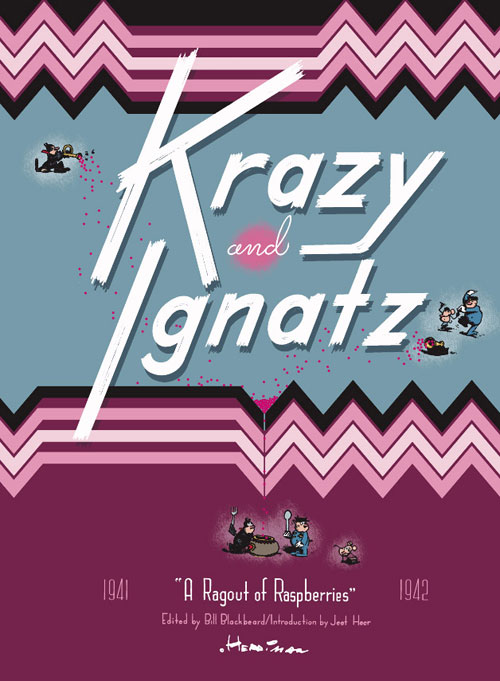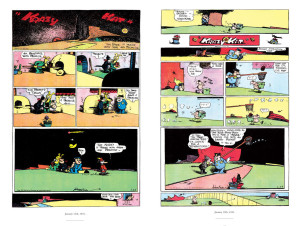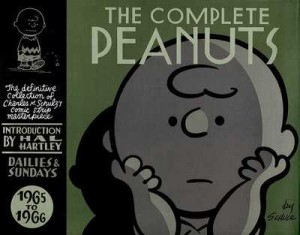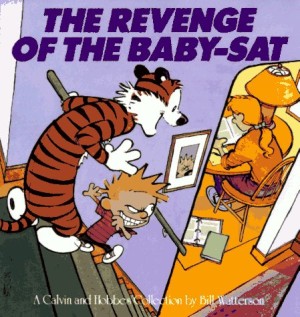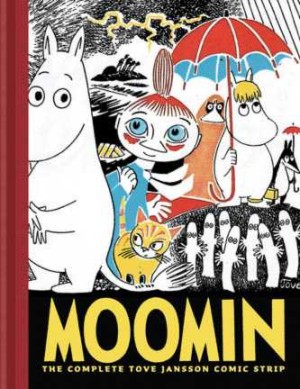Review by Woodrow Phoenix
Volume twelve of of the collected Krazy Kat by George Herriman opens with a piece of original art by Herriman, the Krazy Kat Sunday page for March 4 1934. This is particularly interesting to see because it’s from the period when few papers were carrying the strip and microfilm copies of regional newspapers were the only sources to be found. A version of this page reconstructed from microfilm appears on page 93 of Krazy and Ignatz: 1933-1934. A comparison of this original art side-by-side with the printed version shows what the pages from this period were supposed to look like. It also shows how inadequate microfilm is as a medium for storing images, although we should be grateful that those Sunday pages were saved in any kind of readable form. That’s followed by one more previously unseen piece of Herriman artwork, a colour drawing made for actress Jean Harlow and director Hal Roach.
Jeet Heer’s introduction explores Herriman’s distinctive use of language in Krazy Kat, a subject which must have inspired a PhD or two. It could definitely fill a book of its own. Heer has three pages to point out some of the more obvious inspirations for Herriman’s wordplay including the Bible, hymns, popular songs of the day, and lyric poetry. Curiously, it doesn’t mention probably the single most characteristic feature of Herriman’s writing: his alliteration.
Meanwhile, the strips themselves continue their amazing mix of vaudevillian slapstick, highflown speechifying and ridiculous plots being cooked up and brought low in one scenario after another. The amount of dialogue in a typical page begins to lessen as the volume appraoches the end, but the ingenuity and visual power of the layouts and imagery doesn’t slacken at all. And for the last time, there’s a glimpse inside the “Jail” where Ignatz is fated to spend many of his days (page 105) and we see what it looks like from his perspective.
By this point there are no superlatives left to describe what a tremendous collection of sustained brilliance this work is. Krazy Kat’s 28-year run is like no other series the medium has ever seen. Herriman’s genius was consistent almost to the very end, which comes in the next and final collection of Sunday pages: Krazy and Ignatz, 1943-1944: “He Nods in Quiescent Siesta”.
